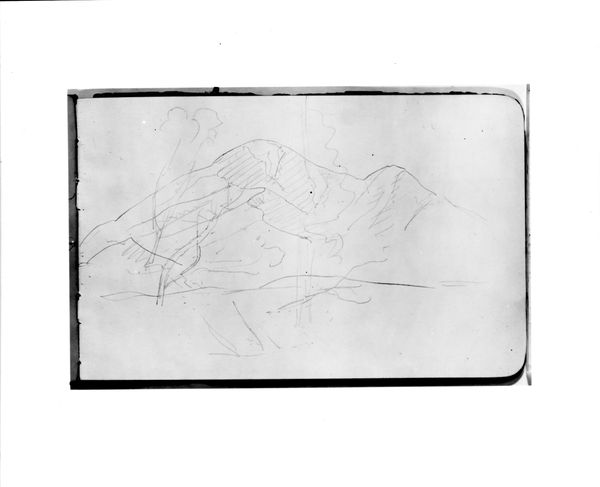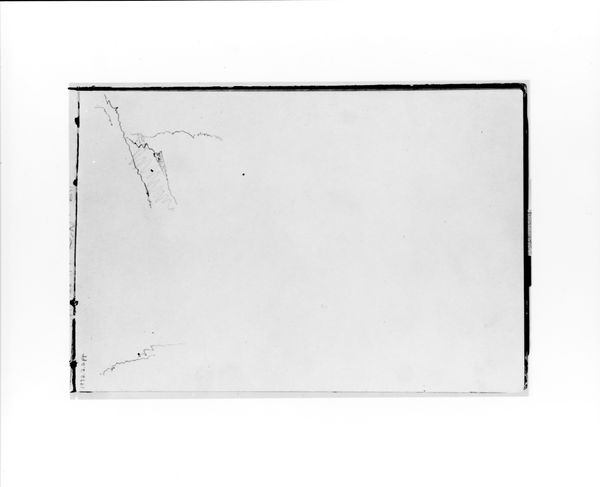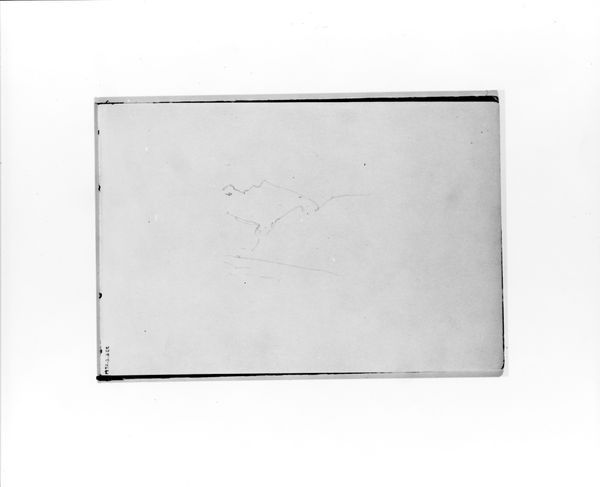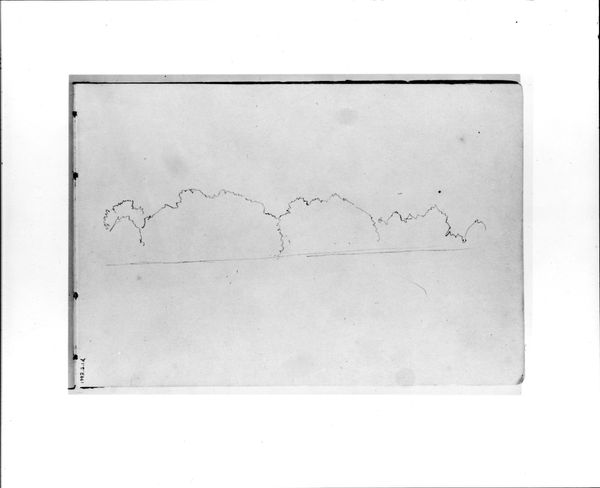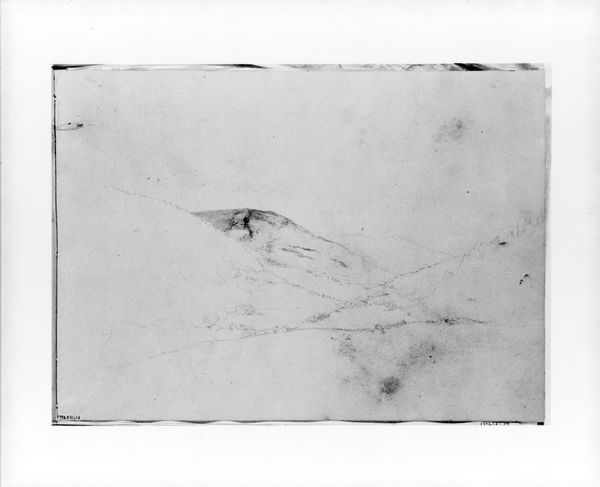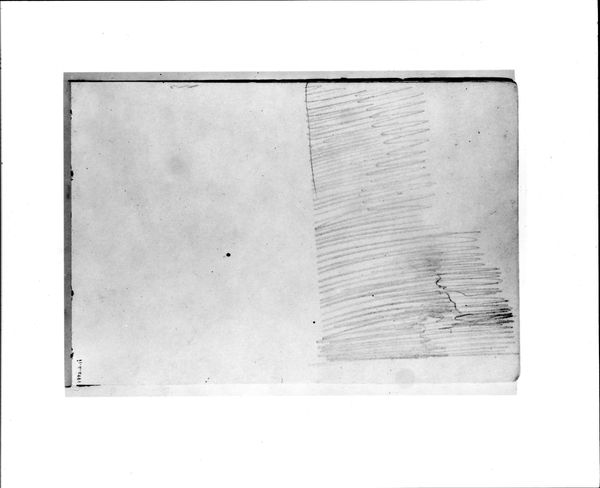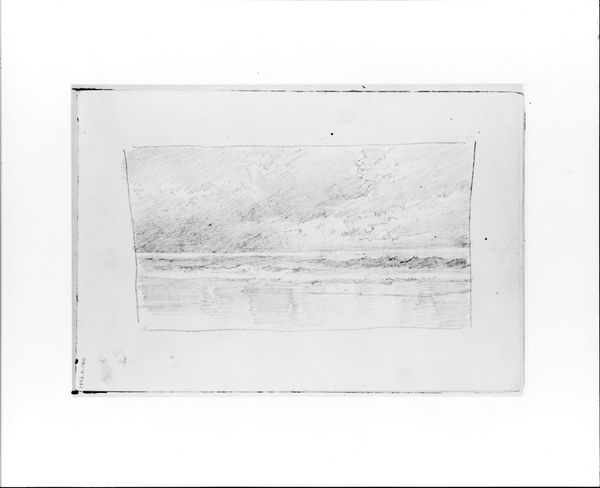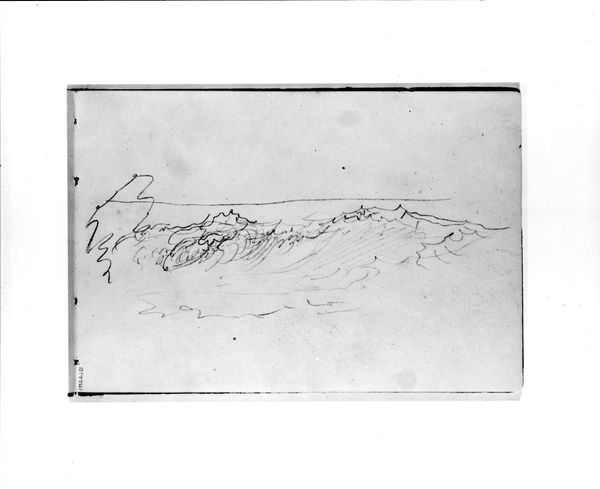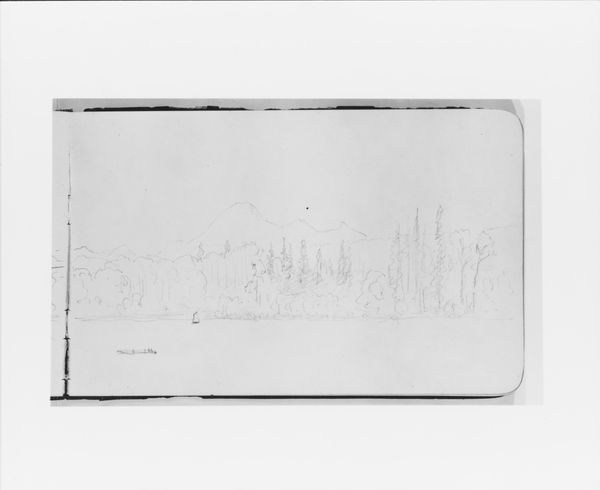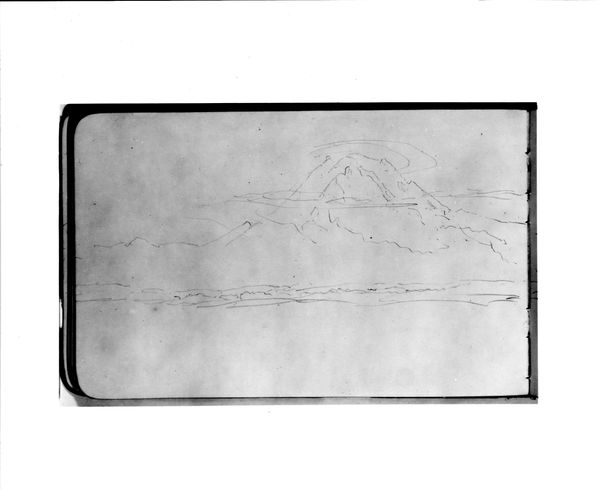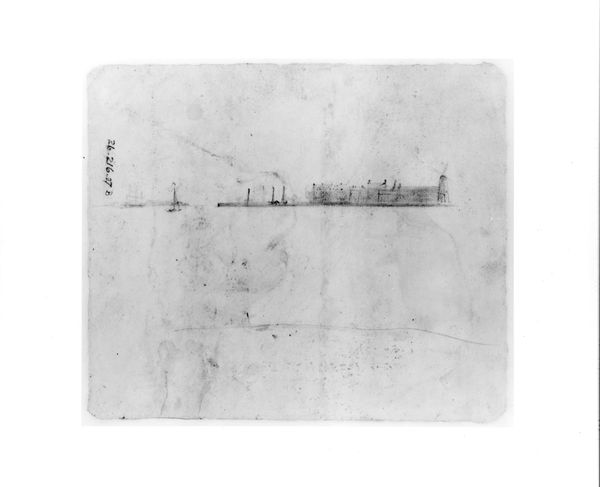
Dimensions: 5 x 7 1/2 in. (12.7 x 19.1 cm)
Copyright: Public Domain
Editor: This is William Trost Richards’ "Mountain Sketch" from 1885. It’s a graphite and pencil drawing, seemingly a page torn straight from a sketchbook. It feels incredibly simple and direct, almost stark in its presentation. What do you see in this piece beyond just a mountain outline? Curator: This sketch speaks volumes about Romanticism's project of idealizing nature, but with an important qualification. The starkness you observe reflects a changing relationship to landscape at the end of the 19th century. While earlier Romantic artists sought sublime grandeur, Richards offers a more… muted vision. Consider the historical context: industrialization was rapidly transforming the American landscape. Do you think this drawing responds to those changes? Editor: That’s interesting. It almost feels like a whisper of a mountain rather than a roar. Maybe he’s not trying to impress us with nature's power but record its quiet existence. Curator: Precisely. Think about the choice of materials. Graphite and pencil – humble tools for capturing a disappearing world. Also, note the emptiness surrounding the mountain; what does that negative space signify? Editor: Loneliness? The fragility of nature maybe? It does bring to mind conversations around land usage at the time, doesn't it? Almost like a protest against the exploitation of natural resources, veiled within this delicate image. Curator: Exactly. By presenting such a simple image, Richards invites us to contemplate the tension between the romantic ideal and the ecological realities of his time. It makes me consider questions about how landscape painting can participate in environmental discourse. Editor: I had never thought about Romanticism having an ecological angle before. It felt like it was always just about pretty scenery! Now I see how much social commentary it can contain. Curator: These historical landscapes have always been spaces where ideas of nation, identity, and environmental consciousness converge. Looking closer always enriches how we understand a work of art.
Comments
No comments
Be the first to comment and join the conversation on the ultimate creative platform.
